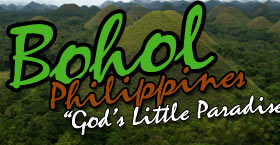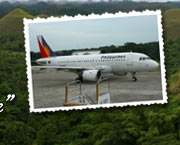Resources for Learning Cebuano
IJsselstein, Sunday, 11 August 2013
Learning Cebuano
Since Cebuano has no official status, and minimal government support as result, it is not easy to find books that will help you learn Cebuano. In local bookshops, you'll sometimes find small phrase-books, that sometimes offer a curious insight into Philippine culture, but are not very useful to learn the language. However, if you search a little further, good resources can be found. We've prepared on overview of Cebuano Learning resources on this site.
If you have any suggestions for additions to this page, please do so in the comment box below.
If a few canned phrases are all you need, this site has a short Cebuano Phrase Book available.
If you want to take the challenge and learn more of the language, invest in at least two dictionaries, and some of the better books mentioned below.
Cebuano has a number of features (shared with other Philippine languages) that make the language a very interesting object of study for linguists. In particular the way Cebuano treats its verbs are a continued area of debate, and as a result, you will see grammar books describing the Cebuano verb system in wildly diverse ways, which can at first be confusing. However, once you can see the system in practice, and memorize the patterns, it can be handled without all the theoretical baggage. Cebuano toddlers also learn it that way...
Courses and Grammars
On-line, a number of sites are available to help you learn Cebuano. Tom Marking has prepared a large PDF file with his study notes. Other sites with Cebuano material are learncebuano.com and livingincebu.com.
Freely available from US government ERIC site is the Cebuano Language Packet, prepared for the US Peace Corps Volunteers. They also have a complete language course by Betty Baura, Cebuano para sa mga Peace Corps Volunteers. (The ERIC server sometimes refuses to serve most PDF files to non-US-based addresses. If this happens, look for a US-based webproxy that allows you to download this 10 MB file).
Another curious resource, prepared by the US military, is Cebuano Headstart2. This is fairly basic in content, but includes interactive exercises with graphics and audio, and many phrases only relevant to soldiers.
Marked for "missionary use only," but in fact giving a concise introduction is Cebuano Language Objectives, produced by the Mormon Church.
Mark Rubrico has a number of Philippine language courses, on his site Languagelinks.org, including Cebuano. They also sell the Cebuano course Magbinisaya Kita ("Let us speak Visayan") by Jessie Grace Rubrico. Given it's high price, I haven't purchased a copy, and am unable to review it here.
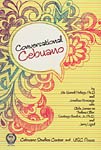 |
| Conversational Cebuano |
For children (with a Cebuano background) there is Think and Learn in Cebuano, available print-on-demand for USD 5.95.
You can also buy A Handbook of Cebuano by the Filipino (Boholano)-Finnish couple Anssi and Nida Räisänen. This combines a short topically organized vocabulary with a concise description of the grammar. It however, does not include a graded introduction of the language, as you would expect from a study book.
Older is Cebuano for Beginners by Maria Bunye and Elsa Yap. Published in 1971, this comprehensive 836 page intensive course was originally intended for US Peace Corps volunteers. They also published a dictionary to accompany this book.
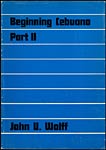 |
| Beginning Cebuano II |
One drawback of Wolff's book is that it does not follow the common way of writing Cebuano. Although the use of the letter q for the glottal stop is very clear, it takes some time to get used to (also for Cebuano speakers trying to help you).
Further Cebuano language books do exist, but I have not been able to obtain. Some of these are:
- Andrew M. Nelson, An Introduction to Cebuano, Rotary Press, 1964.
- G. Trienekens, Bisayá' Lessons, Cebu Star Press, 1963.
- Antonio Van Odijk, Elementary Grammar of the Bisayan Language, Sacred Heart Seminary, 1959. (Which was given quite a negative review).
If you have access to any of these, please be in touch with the webmaster.
Mainly of historical interest are a number of Cebuano grammars that can be found on Google Books. Those all were published before 1923, and use the old, Spanish based orthography. Furthermore, they often try to force the grammatical concepts of Latin on Cebuano, which has a completely different structure.
Dictionaries
Good dictionaries for Cebuano are also quite hard to obtain, but a number of good ones do exist.
On this site, we offer a search interface on the excellent Cebuano dictionary by John U. Wolff, first published in 1972. Scans of this book are available on line at Cornell University: Vol I (A-K) and Vol II (L-Z). This is the best dictionary available for Cebuano. However, make sure you read the introduction before using it, and understand that it does not use the common orthography.
Also very useful is the dictionary at binisaya.com, produced as an offshoot of the author's research in Cebuano verbal morphology. It has a large vocabulary, and is able to find matching root words at ease.
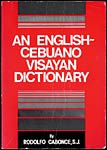 |
| Cebuano Dictionary |
More recent is Jes Tirol's Kapulongnan Binisay-Ininglis/Dictionary Bisaya-English, which appeared in 2010, and is well worth its PHP 950 price-tag.
Almost simultaneous with Wolff's dictionary, in 1971, Maria Bunye and Elsa Yap published their Cebuano-Visayan Dictionary.
More dictionaries are listed on Jessie Grace Rubrico's Review of Cebuano dictionaries..
Jeroen Hellingman
What readers think...
| Karen wrote: |
| Tuesday, 31 July 2018 23:44:20 PHT |
| Where can you purchase Jes Tirol's Kapulongnan Binisay-Ininglis/Dictionary Bisaya-English? |
Also give your comments on this article
We reserve the right to remove or edit comments posted on this website. Please read our conditions of use for details. You can use <i>italics</i>, <b>bold</b>, <p> new paragraph, <a href="url">link</a>. Other markup will be removed. Use of the forums for advertising is prohibited. Enterprises located in Bohol can request to be added to the business directory.
